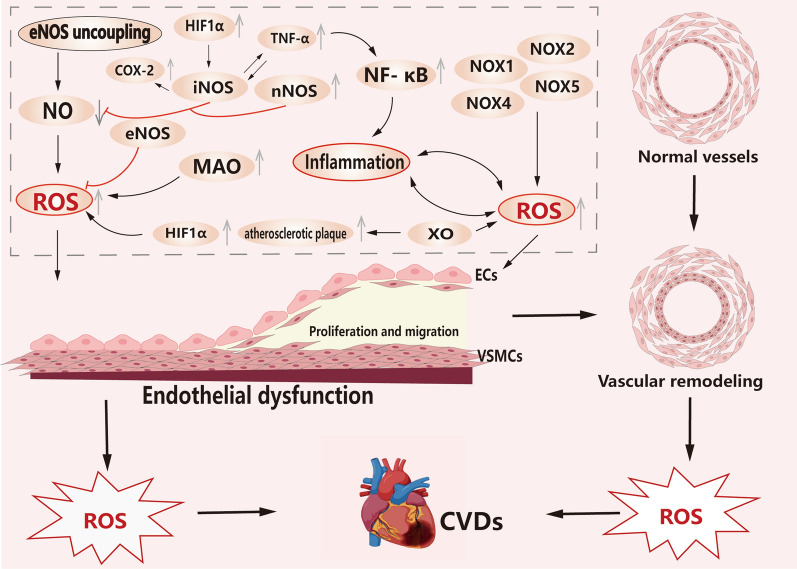Fig. 2.
Overproduction of ROS leads to endothelial dysfunction, which can be seen in the proliferation and migration of PAECs and PASMCs. Endothelial dysfunction and ROS overproduction are also potential factors that exacerbate vascular remodeling. The uncoupling of eNOS, the activation of NOXs, and the inflammatory response lead to an increase in ROS expression, which in turn promotes the development of CVDs. In ROS-induced disease processes, disease progression also results in more ROS production, which further exacerbates the disease. In addition, XO induced the production of ROS, which increased the accumulation of atherosclerotic plaques. MAO plays an important role in the MIRI process and is an important source of mitochondrial ROS in myocardial metabolic pathology. MAO promotes the generation of ROS. (black arrows represent promotion, red arrows represent inhibition, and gray arrows represent elevated or reduced expression)

